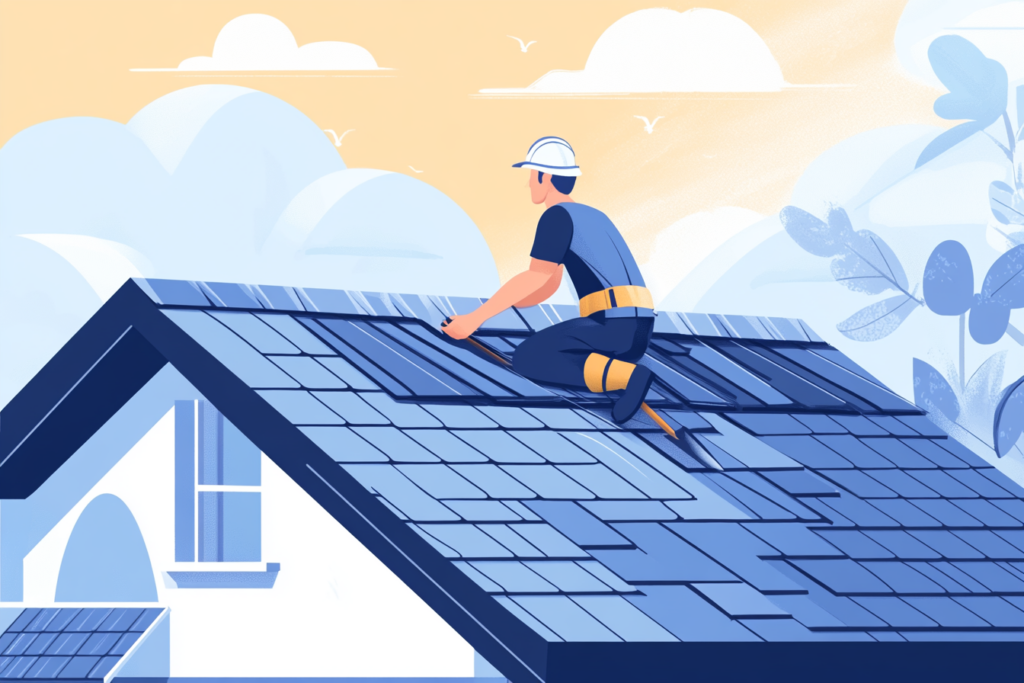When it comes to maintaining your home, you likely focus on the things right in front of you. You might pay attention to the paint on your walls, the stains on your carpet, or the loose handles on your cabinets. But, the places that are out of sight shouldn’t be out of mind. Your roof is one of your home’s most critical (and expensive) parts to repair. One of the many roof problems that plague homeowners is poor roof ventilation. So, you need to be aware of your attic’s ventilation and the potential impact it might be having on your roof.
Keep reading to learn more about proper roof ventilation, why it matters, and the signs that you may have an attic ventilation problem.
What is Attic and Roof Ventilation?
Simply put, the best way to ventilate your roof is to ensure the attic has adequate air circulation.
Your home needs to be able to breathe to allow for air to circulate well and for your HVAC sytem to work efficiently and effectively. Your attic’s ventilation is critical for your overall home’s ventilation because hot air rises and will sit in the attic or roof space. Poor air circulation can cause many different types of problems in these areas, both in the summer and the winter.
5 Reasons Why Proper Roof Ventilation Matters

Some of the potential problems that can come with improper roof ventilation are:
1. Roof Damage
During hot weather, the sun shining down on your roof can increase the overall temperature in the attic. If the attic doesn’t have proper airflow to cool down the roof, the roof sheathing and shingles can get prematurely damaged. This will impact the appearance of your roof and reduce its overall lifespan.
Considering the average roof repair costs homeowners over $1,000, you want to do all you can to keep your roof in tip-top shape.
2. Uncomfortably Hot Indoor Temperatures
Have you ever been on the top level of your home and found the rooms up there unbearably hot? Another problem with an attic that isn’t well-ventilated is that it can cause the heat from hot summer days to radiate down through the floor to the rest of the house.
As a result, you may have to avoid the top floors of your home and turn up your air conditioner, which can result in costly utility bills.
3. Risk of Mold, Mildew and Structural Damage
Warm air rises and carries moisture in it. In a house, this warm, damp air ends up in the attic and roof space. And in the winters, when you keep the temperatures in your home at a comfortable, warm setting, warm air rises and hits the cold surface of the roof, turning it into condensation. That condensation either sits there and collects in the attic and roof or drips down the side of your home. Either way, the potential for mold and mildew growth here is high. And, if the problem isn’t caught early on, an excessive amount of mold and mildew can lead to structural damage to your property.
4. Void Warranty on Roof Materials
If you’ve recently had your roof done, you know you typically get two warranties with your new roof. One of those warranties is a material warranty, which covers you if there are any issues with the roof materials’ functionality or manufacturer defects.
However, if your attic isn’t ventilated per the warranty’s requirements, the warranty is immediately voided. The company can state that your attic and roof conditions were inadequate, and any damage is not their liability.
5. Risk of Ice Dams
When temperatures get extremely cold in the winter, the warm air that rises to the attic from the heated home starts to collect in the underside of the roof deck. When the roof deck warms, accumulated snow will melt and trickle down the roof. As this warmed runoff hits the cold outer edge, it turns back into ice. Eventually, this process can form an ice dam on your roof, which prevents melting snow from draining off the roof. Ice dams are dangerous and come with many problems, including potential roof damage.
Signs You Have Poor Roof Ventilation
Here are some warning signs that your home may have inadequate roof ventilation:
- Your heating and cooling bills have been increasing. This may be due to your attic insulation getting wet and becoming less effective.
- Your roof edge has an ice buildup during winter months.
- Your roof’s shingles are starting to look deformed and warped.
- You’re paying for repairs on your heating and cooling systems more frequently. These systems may be working in overdrive to combat the poor circulation in your home, leading to breakdowns.
- There are signs of mold and metal rusting in the attic.
- The top level in your house feels unbearably hot in the summer months.
How to Fix Your Roof’s Ventilation
If you’re reading this and are concerned about your roof’s ventilation, you should contact a certified roofing contractor to examine your space. The first step will be to determine if your attic has enough insulation. Building codes mandate minimum attic insulation requirements, but your home may have greater needs depending on factors such as climate, the age of your roof, and more.
Some of the possible improvements that might be suggested to improve your attic’s insulation are:
- Installing soffit vents and/or a ridge vent
- Sealing the attic floor
- Improving the air space between the attic insulation and roof sheathing
In addition to fixing the attic, you may also need to fix your roof. If your roof has suffered major damage or is nearing its lifespan, replacing it might be the solution.
Your roofing contractor will provide their expert opinion on the recommended next steps. The good news is that you’ll notice the difference once you fix your roof’s ventilation. The temperature in your home will feel more comfortable, and fresh air will properly circulate around.
You might also be interested in: How to Recognize Signs of Roof Damage: 10 Early Indicators




